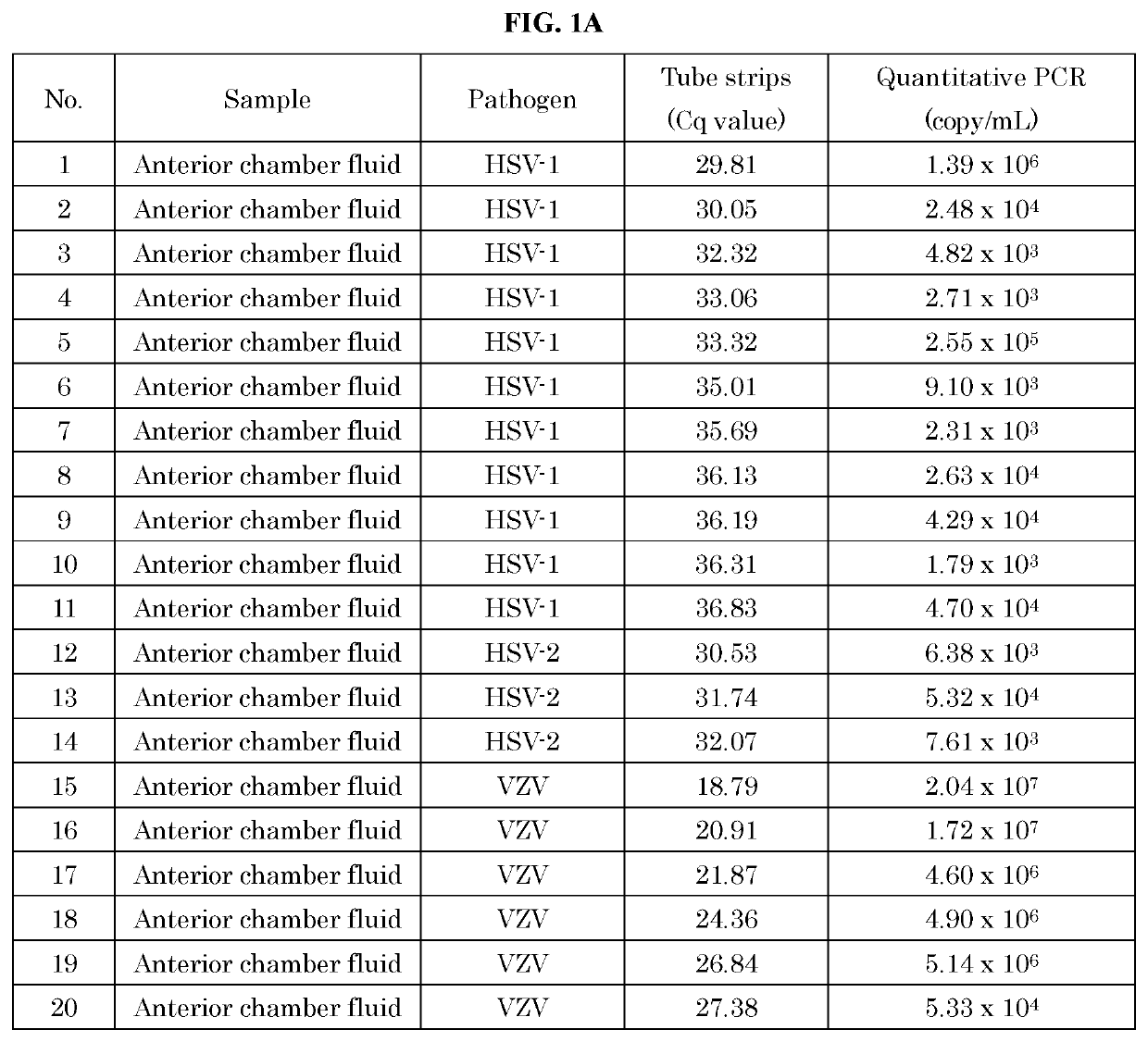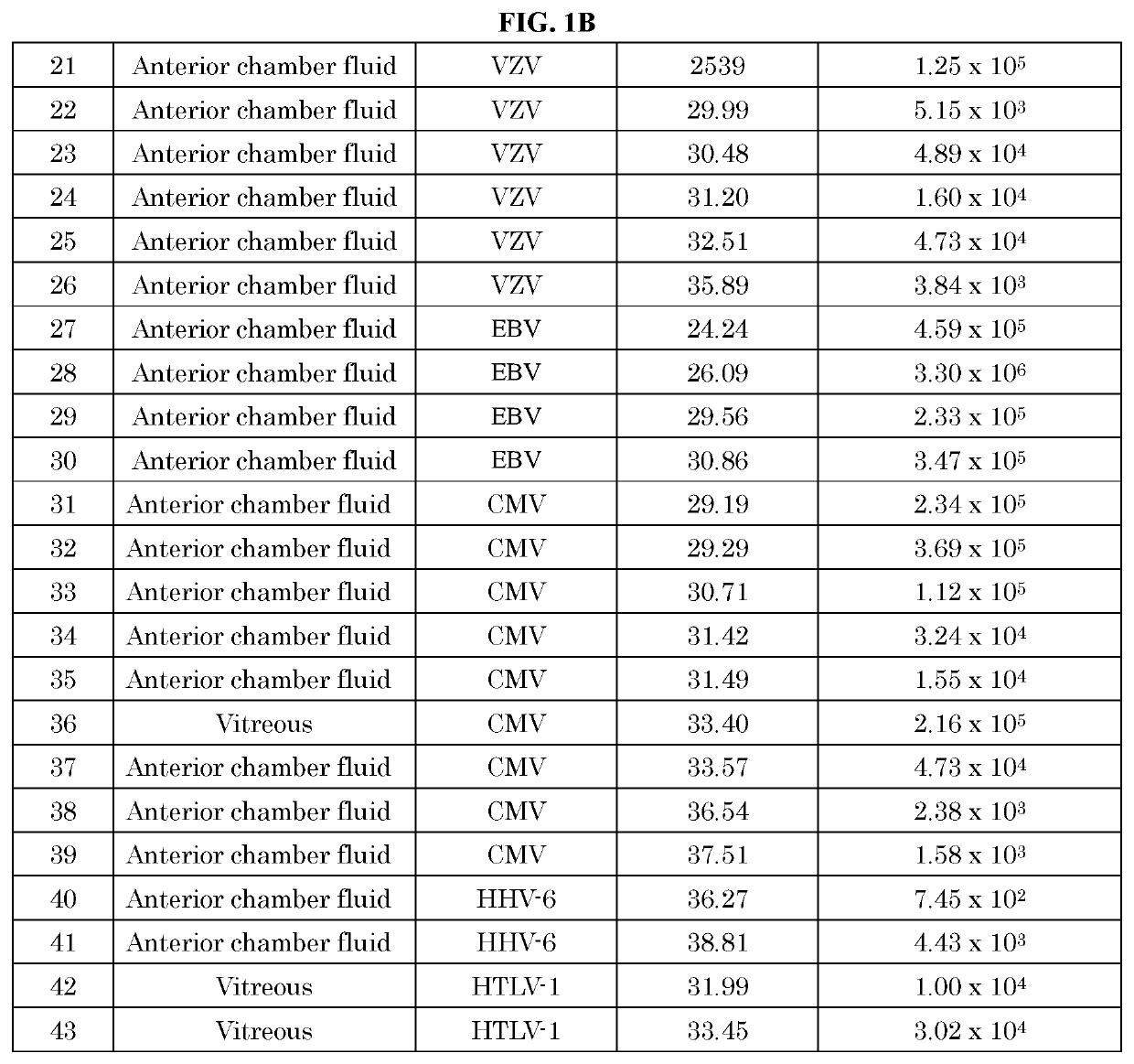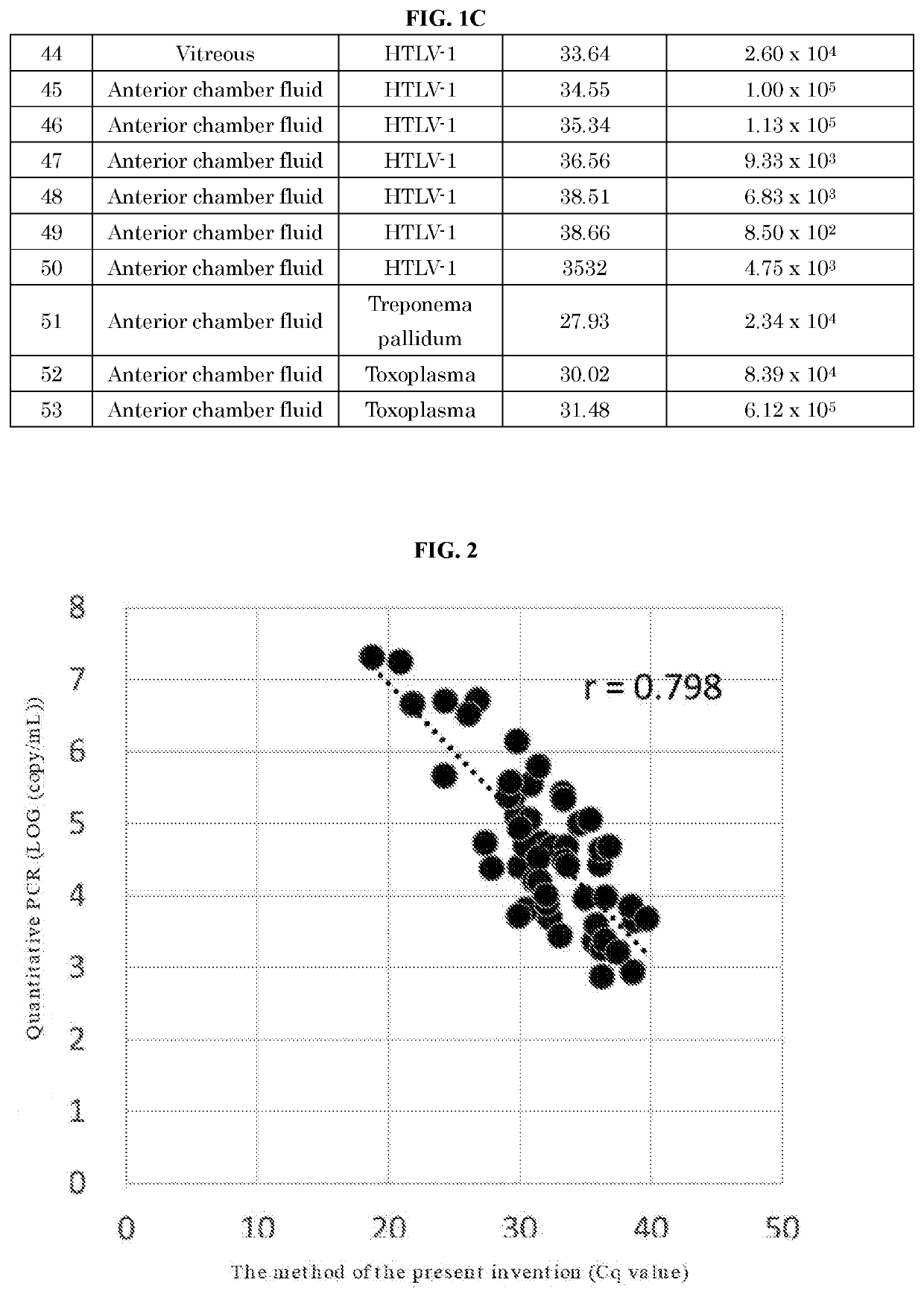Method for detecting microorganisms
a microorganism and detection method technology, applied in the field of detection methods, can solve the problems of insufficient sample amount, inability to detect a plurality of pathogens, and difficulty in distinguishing between infectious uveitis and non-infectious uveitis, so as to avoid human error in the detection operation.
- Summary
- Abstract
- Description
- Claims
- Application Information
AI Technical Summary
Benefits of technology
Problems solved by technology
Method used
Image
Examples
example 1
[0075][Analysis of 53 Infectious Uveitis-Positive Samples]
[0076]20 μL of anterior chamber fluid or vitreous of samples obtained from 53 patients with suspected infectious uveitis were mixed with 180 μL of PCR buffer. The composition of the PCR buffer after mixing was 0.05% (w / v) nonionic surfactant, 1.5 mM MgCl2, 35 mM KCl and 200 μM dNTP (dATP, dGTP, dCTP and dTTP), respectively. 20 μL of the obtained mixed solution was dispensed into each tube of an 8-strip tube strip containing the solid composition for PCR reaction. The solid composition for PCR reaction in the strip tube comprises a DNA polymerase, a fluorescent dye-labeled oligonucleotide probe for fluorescent detection of a PCR amplification product different in each tube, and one or two different PCR primer pairs. In addition, it contains one or two types of different PCR primer pairs. The combinations of PCR primer pairs were as follows.[0077](i) Glyceraldehyde-3-phosphate dehydrogenase (GAPDH) gene detection primer pair an...
example 2
[0089][Analysis of Samples Diagnosed as Non-Infectious Uveitis]
[0090]FIG. 3 shows the results of 51 samples obtained from patients diagnosed with non-infectious uveitis measured by the real-time PCR (qPCR) method and the method of the present invention. All samples were negative by the real-time PCR (qPCR) method. They were also negative by the method of the present invention. That is, it was shown that the measurement results obtained by both methods match with each other.
[0091]Sequence Table
[0092]20190607 Sequence Table
PUM
| Property | Measurement | Unit |
|---|---|---|
| fluorescent | aaaaa | aaaaa |
| viscous | aaaaa | aaaaa |
| concentrations | aaaaa | aaaaa |
Abstract
Description
Claims
Application Information
 Login to View More
Login to View More - R&D
- Intellectual Property
- Life Sciences
- Materials
- Tech Scout
- Unparalleled Data Quality
- Higher Quality Content
- 60% Fewer Hallucinations
Browse by: Latest US Patents, China's latest patents, Technical Efficacy Thesaurus, Application Domain, Technology Topic, Popular Technical Reports.
© 2025 PatSnap. All rights reserved.Legal|Privacy policy|Modern Slavery Act Transparency Statement|Sitemap|About US| Contact US: help@patsnap.com



